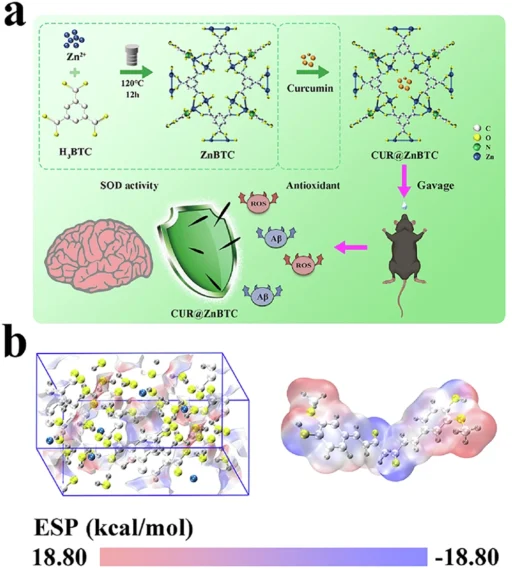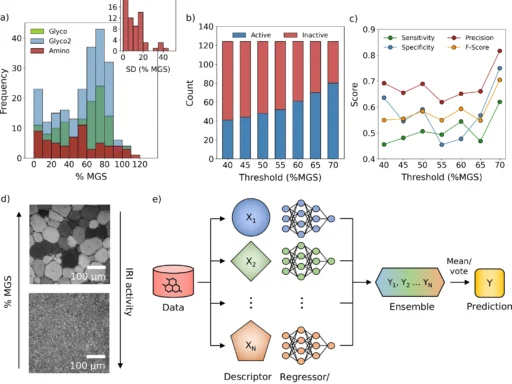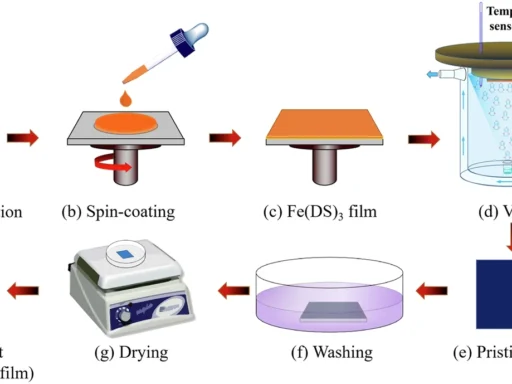Table of Contents
Preface of Alzheimer’s Disease:
Alzheimer’s disease (AD) is a neurological condition that profoundly affects memory, cognition, and behavior. It is a common type of dementia, affecting millions of people worldwide. Despite extensive study over several decades, therapy choices for Alzheimer’s disease remain constrained, posing a substantial challenge for both academics and healthcare professionals. Oxidative stress, characterized by an imbalance between free radical generation and the body’s antioxidant defenses, is considered a primary contributor to Alzheimer’s disease (AD).
In recent years, interest in utilizing natural antioxidants to mitigate oxidative stress has increased—nonetheless, the administration and consistency of natural antioxidants in the body present difficulties. Researchers are investigating innovative alternatives, such as interface potential-induced antioxidant mimic systems, to address these constraints and provide more effective treatments for Alzheimer’s disease. These systems emulate the function of natural antioxidants and possess the capacity to modulate oxidative stress in the brain, potentially decelerating or even reversing the advancement of Alzheimer’s disease.
This research looks at how interface potential-induced natural antioxidant mimic systems work, how oxidative stress affects Alzheimer’s disease, and how these new technologies might change the way AD is treated. Schematic illustration of the assembly of antioxidant systems depends on interface potential and the therapeutic mechanisms.
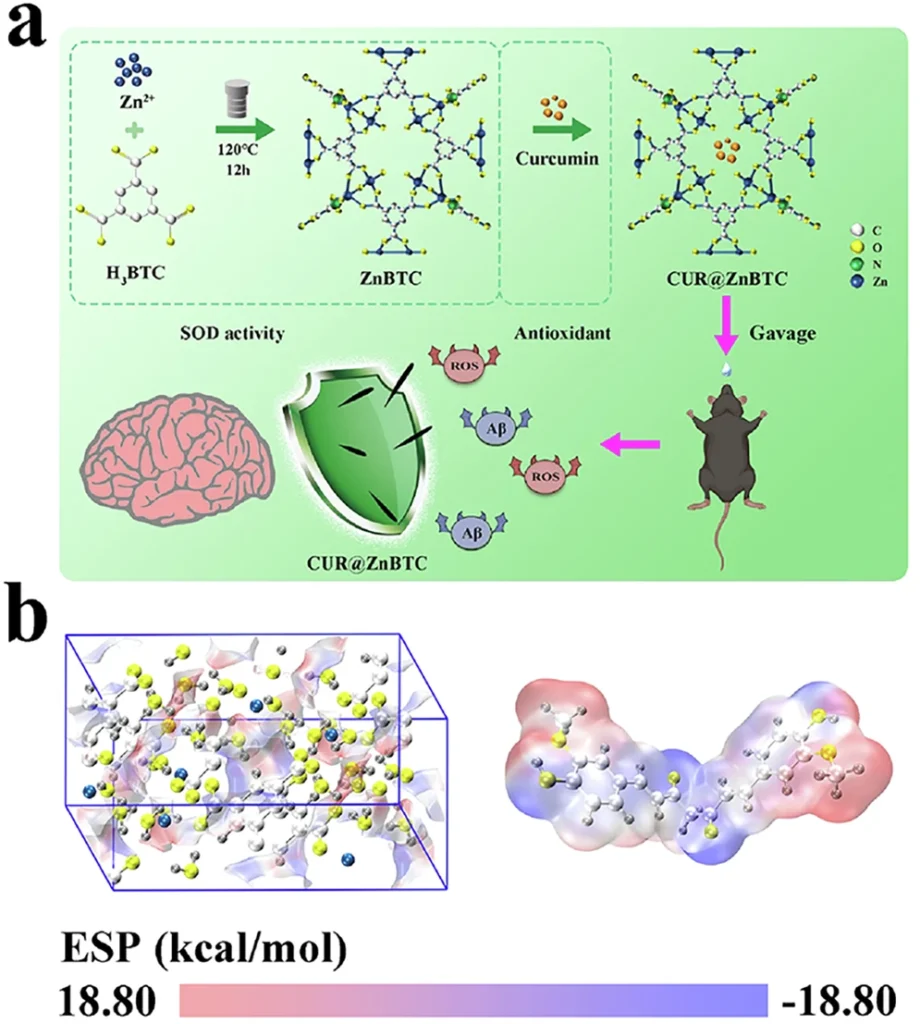
Understanding Alzheimer’s Disease:
What is Alzheimer’s Disease?
Alzheimer’s disease is a progressive neurodegenerative condition marked by the degeneration of neuronal cells, resulting in cognitive impairment. Although we do not fully understand the precise etiology of Alzheimer’s disease, we frequently correlate it with:
Amyloid-beta plaques: aggregated protein fragments that accumulate between neurons, impairing transmission.
Neurofibrillary tangles: twisted aggregates of the tau protein that accumulate within neurons, impairing their functionality.
Chronic inflammation and oxidative stress both harm neuronal cells and facilitate disease progression.
The impact of oxidative stress on Alzheimer’s disease:
Oxidative stress arises from an imbalance between the generation of reactive oxygen species (ROS) and the body’s capacity to counteract these molecules with antioxidants. In Alzheimer’s disease, heightened oxidative stress impairs neurons and facilitates the accumulation of amyloid beta plaques and tau tangles, exacerbating cognitive deterioration.
The brain is especially susceptible to oxidative stress because of its elevated oxygen demand, abundant lipid composition, and comparatively limited antioxidant defenses. Consequently, mitigating oxidative stress is essential for formulating novel therapeutic strategies for Alzheimer’s disease.
What are antioxidants?:
Natural Antioxidants:
Antioxidants are chemicals that neutralize reactive oxygen species (ROS) and avert oxidative cellular damage. Natural antioxidants, including vitamin C, vitamin E, glutathione, and polyphenols (present in green tea and berries), are essential for safeguarding cells against oxidative stress.
Obstacles to Using Natural Antioxidants for Alzheimer’s Disease:
Although natural antioxidants may mitigate oxidative stress, numerous hurdles exist in their application for treating Alzheimer’s disease:
Restricted bioavailability: Numerous antioxidants deteriorate prior to reaching the brain, constraining their therapeutic efficacy.
Insufficient penetration of the blood-brain barrier (BBB): The blood-brain barrier (BBB), a semi-permeable membrane, protects the brain by preventing the entry of various chemicals, including antioxidants.
Unstable in the body: Natural chemically unstable antioxidants may deteriorate in the body before delivering their effects.
These issues have prompted researchers to investigate novel approaches for providing antioxidant protection to the brain, resulting in the creation of antioxidant mimic systems. Synthesis and characterization.

What constitutes an antioxidant mimic system?
An antioxidant mimic system is an artificial or bio-inspired construct that emulates the properties of natural antioxidants. Engineers engineer these systems to neutralize reactive oxygen species and alleviate oxidative stress, thereby overcoming the limitations of natural antioxidants, such as inadequate stability and bioavailability. The objective is to augment antioxidant effects in areas of the body, particularly the brain, where oxidative stress significantly contributes to disorders such as Alzheimer’s.
Interface Potential in Antioxidant Mimic Systems:
Comprehending Interface Potential:
The interface potential denotes the electrical or chemical potential difference present at the boundary between two materials or substances. We can harness this capability in antioxidant mimic systems to establish conditions that encourage antioxidant-like action at the molecular level.
Effective generation of an interface potential can do the following:
1). Facilitate electron transfer processes that mitigate reactive oxygen species (ROS).
2). Stabilize antioxidant-like molecules or systems at the interface of two phases (e.g., aqueous and lipid environments).
3). Augment the system’s capacity to traverse biological barriers, including the blood-brain barrier, and directly influence the brain.
How Interface Potential Resembles Natural Antioxidants:
Natural antioxidants work in a way that interface potential-induced systems do too: they neutralize harmful reactive oxygen species that cause oxidative damage. We engineer these systems to be more stable, focused, and effective in situations where natural antioxidants are inadequate, such as the complex and oxidative milieu of the Alzheimer’s disease-impacted brain.
Typically, these systems integrate materials like nanoparticles, enzymes, or other biomimetic structures with antioxidant capabilities. By manipulating the interface potential, these materials can achieve the following:
1). Model the scavenging action of natural antioxidants.
2). Enhance the stability of antioxidant-like compounds.
3). Augment the targeted delivery of antioxidant benefits to specific regions, such as the brain. Curcumin release and antioxidant testing experiments.
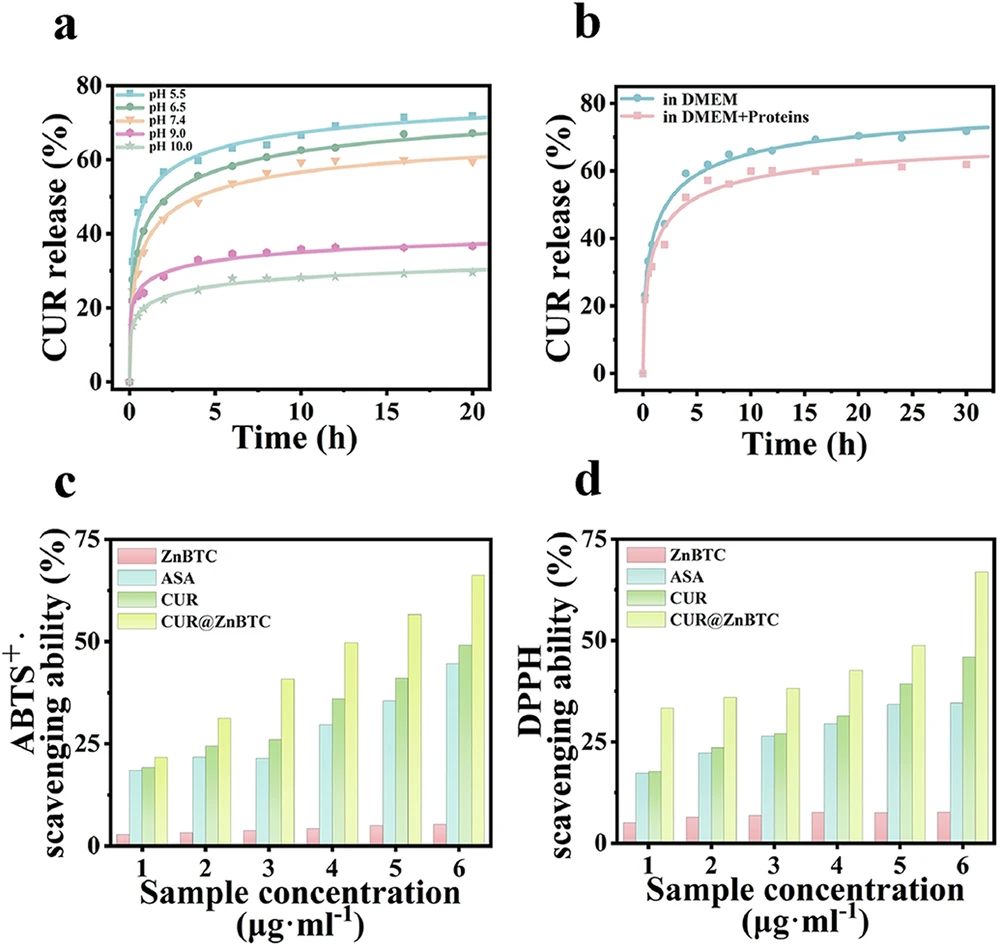
We are developing natural antioxidant mimetic systems for Alzheimer’s disease:
What is the rationale for using antioxidant mimics to treat Alzheimer’s disease?
Oxidative stress significantly contributes to neuronal damage in Alzheimer’s disease. Natural antioxidants face limitations due to bioavailability, stability, and administration challenges; thus, mimic systems offer a viable option. These methods provide a more regulated and prolonged method to diminish oxidative stress in the brain, potentially alleviating the advancement of Alzheimer’s disease.
By using an interface potential to replicate the antioxidant action, these systems could:
1). Safeguard neurons against oxidative injury.
2). Reduce the production of amyloid beta plaques and tau tangles.
3). Gradual cognitive deterioration linked to Alzheimer’s disease.
Categories of Natural Antioxidant Mimic Systems:
Researchers are investigating various natural antioxidant mimic systems for the treatment of Alzheimer’s disease. These comprise:
1). Nanozymes
Nanozymes are enzymes made from nanoparticles that were designed to work like natural antioxidant enzymes like catalase and superoxide dismutase. These enzymes can decompose reactive oxygen species, thereby diminishing oxidative stress and neural injury. Through meticulous engineering of their interface potential, enzymes can more effectively replicate the behavior of natural antioxidants compared to traditional antioxidants.
2). Cerium Oxide Nanoparticles (CeONPs)
CeONPs represent a promising antioxidant mimic. These nanoparticles possess catalytic antioxidant capabilities and can eliminate reactive oxygen species by oscillating between several oxidation states. We can customize their interface potential to enhance their effectiveness in the oxidative environment of the Alzheimer’s brain.
3). Carbon-derived Nanomaterials
We can functionalize graphene oxide and carbon nanotubes to replicate antioxidant characteristics. When designed with the appropriate interface potential, these materials can function as efficient ROS scavengers, mitigating oxidative stress in the brain.
4). Polymer-based Mimetic Systems
Polymer systems that replicate the architecture of natural antioxidants are currently under development. Engineers can engineer these systems to release antioxidant-like compounds in response to oxidative stress, providing a targeted method for reducing ROS levels in the brain. Determine the SOD-like activity.
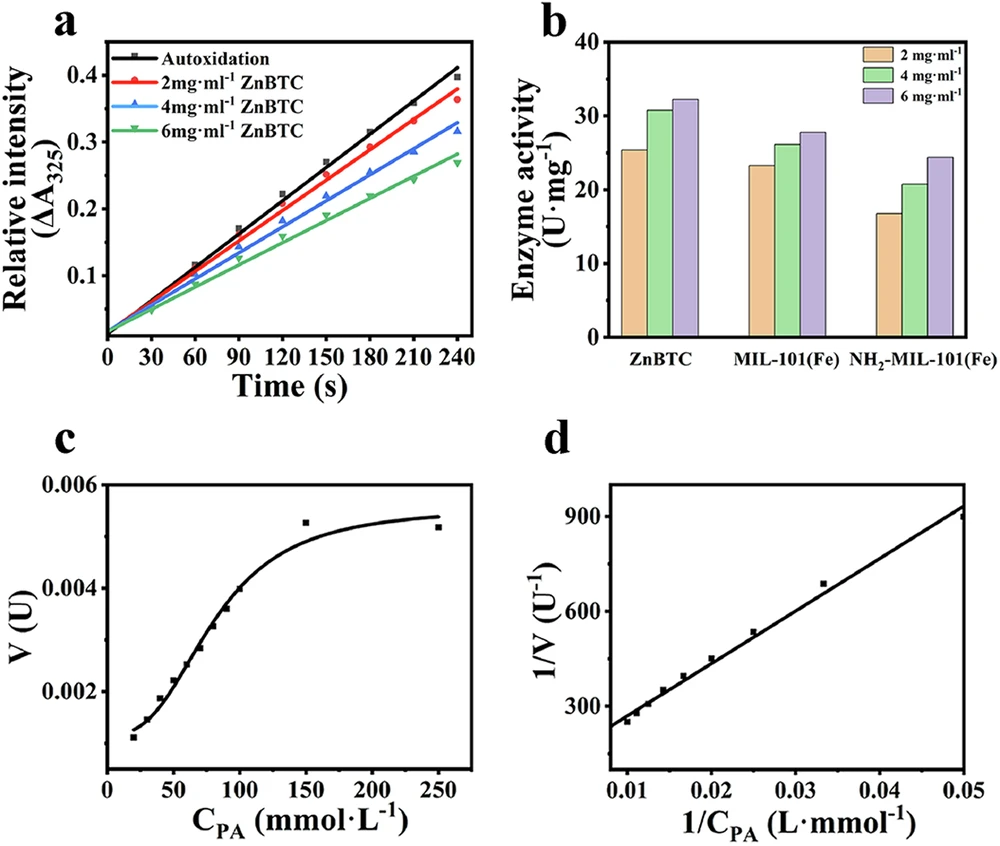
Mechanisms of Antioxidant Mimetic Systems in Alzheimer’s Therapy:
Addressing oxidative stress:
Oxidative stress is a critical contributor to the advancement of Alzheimer’s disease. Antioxidants mimic systems’ function by targeting reactive oxygen species (ROS) and mitigating their detrimental effects. By mitigating oxidative stress, these mechanisms can safeguard neurons from injury, thereby decelerating the disease’s progression.
Mitigating Amyloid-Beta Plaques:
A characteristic aspect of Alzheimer’s is the accumulation of amyloid-beta plaques. The development and accumulation of these plaques are linked to oxidative stress. These systems may mitigate oxidative stress by emulating the function of natural antioxidants, potentially delaying or inhibiting the development of amyloid-beta plaques.
Mitigating Tau Tangles:
Tau tangles, akin to amyloid beta plaques, are another characteristic of Alzheimer’s disease. These tangles develop within neurons and interfere with normal cellular function. Oxidative stress contributes to the development of tau tangles, and antioxidant mimic systems can mitigate their formation by neutralizing reactive oxygen species (ROS).
Transversing the Blood-Brain Barrier:
A major obstacle in treating Alzheimer’s disease is the delivery of medications to the brain, hindered by the blood-brain barrier (BBB). However, researchers can design antioxidant mimic systems, especially those that use nanoparticles, to cross the blood-brain barrier more effectively than natural antioxidants. By adjusting the interface potential, researchers may develop devices that focus on particular regions of the brain impacted by Alzheimer’s. Improvement in Aβ deposition and behavioral deficits during treatment.

Benefits of Interface Potential-Induced Antioxidant Mimic Systems:
Improved Stability:
One primary advantage of interface potential-induced systems is their superior stability relative to natural antioxidants. These systems exhibit a reduced propensity for degradation before reaching the brain, hence enhancing their efficacy in mitigating oxidative stress.
Enhanced Bioavailability:
Because of their design, antioxidant mimic systems can exhibit more bioavailability than natural antioxidants. Their design ensures their stability within the body for prolonged periods, thereby enhancing their effectiveness.
Precision Delivery:
Another notable advantage of these systems is their capacity to focus on particular regions of the brain. By changing the interface potential, scientists may be able to create mimic systems that focus on areas affected by Alzheimer’s disease, giving antioxidants exactly where they are needed most.
Prolonged Safeguarding:
In contrast to genuine antioxidants, which may deteriorate rapidly, antioxidant mimic systems can offer prolonged protection against oxidative stress. This ongoing exercise is essential for controlling a chronic condition such as Alzheimer’s, where oxidative stress poses a persistent risk to cerebral health.
Contemporary Research and Prospective Trajectories:
Current Research:
Numerous current investigations are investigating the application of interface potential-induced antioxidant mimic systems for Alzheimer’s disease. These studies largely concentrate on creating nanoparticle-based systems capable of traversing the blood-brain barrier to provide tailored antioxidant protection to the brain.
A potential research field entails the integration of antioxidant mimic systems with medication delivery technologies. Researchers aim to develop more comprehensive Alzheimer’s disease therapy techniques by co-administering antioxidant mimics and pharmaceutical agents.
Obstacles and factors:
Despite the potential of these technologies, there are still issues that require attention. Ensuring that the mimic systems are non-toxic, biocompatible, and capable of properly traversing the blood-brain barrier are critical areas of current research. Furthermore, additional research is required to validate the long-term safety and effectiveness of these devices in human subjects.
Prospective Trajectories:
With the progression of research on antioxidant mimic systems, we anticipate the emergence of more advanced designs that optimize targeting, minimize side effects, and improve therapeutic efficacy. Future advancements may include the integration of machine learning and artificial intelligence to improve the design and implementation of these systems, potentially transforming our approach to Alzheimer’s treatment.
Final Assessment:
The creation of interface potential-induced natural antioxidant mimic systems signifies a potentially novel strategy for addressing Alzheimer’s disease. These systems emulate the function of natural antioxidants, providing a more efficacious method to mitigate oxidative stress in the brain, potentially decelerating disease progression.
Ongoing research may render these systems a vital element of future Alzheimer’s therapies, providing hope to millions afflicted by this debilitating disorder. The ability to address oxidative stress and provide sustained protection to neurons presents novel opportunities for Alzheimer’s disease management and the enhancement of life quality for affected individuals.
Frequently Asked Questions:
1). What constitutes an antioxidant mimic system?
By neutralizing reactive oxygen species (ROS) and reducing oxidative stress, an antioxidant mimic system mimics the action of natural antioxidants.
2). What is the significance of oxidative stress in Alzheimer’s disease?
Oxidative stress is pivotal in neuronal injury, the development of amyloid-beta plaques, and tau tangles, all of which facilitate the advancement of Alzheimer’s disease.
3). What is the function of interface potential in antioxidant mimic systems?
The interface potential facilitates conditions that augment the mimic system’s antioxidant-like activity, enhancing electron transfer processes and improving the system’s stability and delivery.
4). What mechanisms enable antioxidant mimic systems to traverse the blood-brain barrier?
We can design these systems, particularly those utilizing nanoparticles, to traverse the blood-brain barrier by adjusting their dimensions, surface chemistry, and interfacial properties.
5). Are there any modern therapies for Alzheimer’s disease that employ antioxidant mimic systems?
Antioxidant mimic systems are still in the research phase, but early tests show that they have a lot of potential. In the future, these systems may be used in a more comprehensive way to treat Alzheimer’s.
For more chemistry blogs, visit chemistry Master

